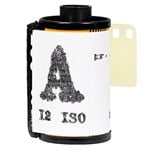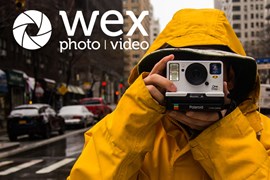There’s no substitute for the physical permanence of film! While digital cameras are continuing to get faster and more technologically advanced, many photographers are re-embracing the old-school cool and delayed pleasures of film. Whether you want to shoot the street with a roll of 35mm film, appreciate the beautiful tonality of 120 medium format, or have some fun with instant film, we’ve got all the analogue emulsions you need.
Compare items Select up to 4 products to compare
{{item.ProductName | limitTo: 50}}
{{item.CulturedPriceValue}}Please select at least two products to compare
Compare items Remove AllCamera Film
Developing, scanning and printing your film
Once you’ve shot your 35mm or 120 negatives, you’ll need to develop them! Film processing is a fun skill to learn, and if you fancy trying your hand in the darkroom, we have a selection of darkroom chemicals available.
Alternatively, there are plenty of film development labs around the UK where you can get your negatives processed, and in many cases scanned and emailed back to you as JPEG or TIFF files. It’s easy to post your rolls and get the negatives sent back to you, or if you live nearby many will allow you to drop your films off in person – just like you would with a disposable camera back in the day.
Printing from film is also a great way to produce a high-quality physical image for hanging on a wall or gifting to a friend. You can browse our selection of wet paper if you want to print yourself, or get in touch with a photo darkroom or printing service – many will be happy to print directly from your negatives.
Trade In
Service
Looking to trade in your equipment?
Get an instant online quote & check eligibility for trade in bonuses »
Looking to trade in your equipment?
Get an instant online quote & check eligibility for trade in bonuses »
Trade In
Service
Looking to trade in your equipment?
Get an instant online quote & check eligibility for trade in bonuses »
Frequently Asked Questions
- Where should I start with film photography?
-
If you’re completely new to the word of analogue photography and want to jump straight in, we’d recommend trying out 35mm film. This is a cheap format, offering enough shots per roll to allow for experimentation, so you won’t sweat it too much if you waste a few shots (and believe us, you will waste a few shots). All you need is an SLR camera, a lens and a few rolls of film!
- Do I need a light meter for film photography?
-
Probably not, but potentially. Many film cameras come with metering systems, some more sophisticated than others, and generally a light meter is not required. However, learning to use a light meter can be great for your photographic practice, and given that older film cameras can be temperamental in use, there’s no harm in getting one. Browse light meters here.
- Is film photography making a comeback?
-
Film photography has found a new audience with younger people, in part thanks to the rise of social networks like Instagram, and its popularity is steadily climbing. It’s a great time to be a film shooter!
- What is ISO in film photography?
-
ISO in film means basically the same thing it does in digital – it refers to the sensitivity of your film stock. A roll of ISO 800 film will be much more sensitive to light, and therefore more usable in dark conditions, than a rolle of ISO 100 film. The trade-off is that the high-ISO film produces more grain – which some users prefer.
You may see some film literature refer to ‘ASA’ instead of ISO – this means the same thing, and is just an older term that was used in the 20th century.
Pre-Loved
Range
Looking to save on your equipment?
Explore our range of second-hand, used, and open-box film cameras »
Looking to save on your equipment?
Explore our range of used and open-box film cameras »
Pre-Loved
Range
Looking to save on your equipment?
Explore our range of used and open-box film cameras »
View Our Awards »
Wex Photo Video is a Good Service Award Gold Winner
Amateur Photographer Good Service Awards
February 2023
Voted by customers & readers of Amateur Photographer magazine.
Wex Photo Video is a Good Service Award Gold Winner
Amateur Photographer Good Service Awards
February 2022
Voted by customers & readers of Amateur Photographer magazine.
Wex Photo Video is a Good Service Award Gold Winner
Amateur Photographer Good Service Awards
February 2021
Voted by customers & readers of Amateur Photographer magazine.
Wex Photo Video is Retailer of the Year
Gear of the Year Awards
February 2020
Voted by customers & readers of Digital Photo / Practical Photography magazines.






